The Red Fort Delhi is more than just an architectural marvel—it’s a living symbol of India’s resilience, pride, and freedom. Built in 1638 by the Mughal Emperor Shah Jahan, this majestic fortress served as the main residence of the Mughal emperors for nearly 200 years.
Its striking red sandstone walls, stretching over 2.4 kilometers, have witnessed the rise and fall of empires, colonial struggles, and the dawn of independence.Often called the Icon of Freedom, the Red Fort Delhi holds a special place in the hearts of Indians because of its deep association with the country’s independence movement.
On 15th August 1947, the first Prime Minister, Jawaharlal Nehru, addressed the nation from its historic ramparts, marking the end of British rule. This tradition of flag hoisting and delivering the Independence Day speech continues every year, keeping the fort’s patriotic legacy alive.
Recognizing its unmatched historical and cultural value, UNESCO declared the Red Fort Delhi a World Heritage Site in 2007. Today, it welcomes over 3 million visitors annually, offering them not just a glimpse of Mughal grandeur, but also a powerful reminder of the nation’s hard-fought freedom.
Historical Background
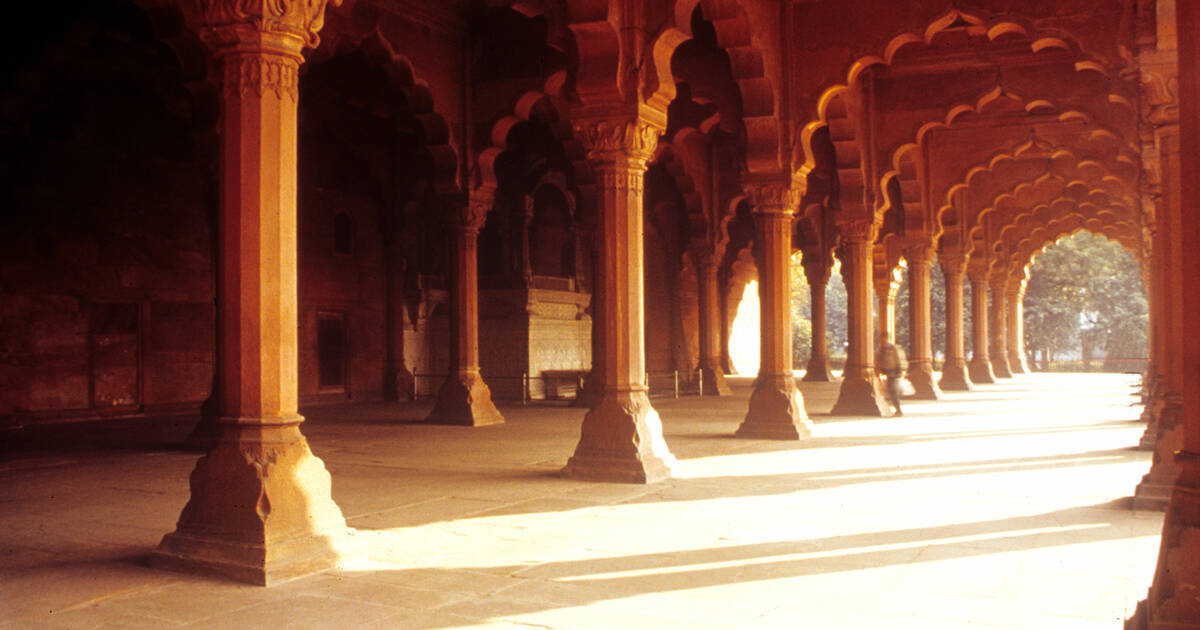
The Red Fort Delhi, commissioned in 1638 by Emperor Shah Jahan, marked the shift of the Mughal capital from Agra to Shahjahanabad (Old Delhi). Built over a decade, it became the political and cultural heart of the empire, housing royal residences, audience halls, and gardens.
More than a fort, Red Fort Delhi was a hub of governance and artistry. It witnessed the Revolt of 1857, where the last Mughal emperor, Bahadur Shah Zafar, was captured, ending Mughal rule and starting direct British control.
On 15th August 1947, Jawaharlal Nehru hoisted the tricolor at Red Fort Delhi, declaring independence. Since then, it has been the stage for the Prime Minister’s annual Independence Day address, cementing Red Fort Delhi as a symbol of freedom.
Architecture and Design
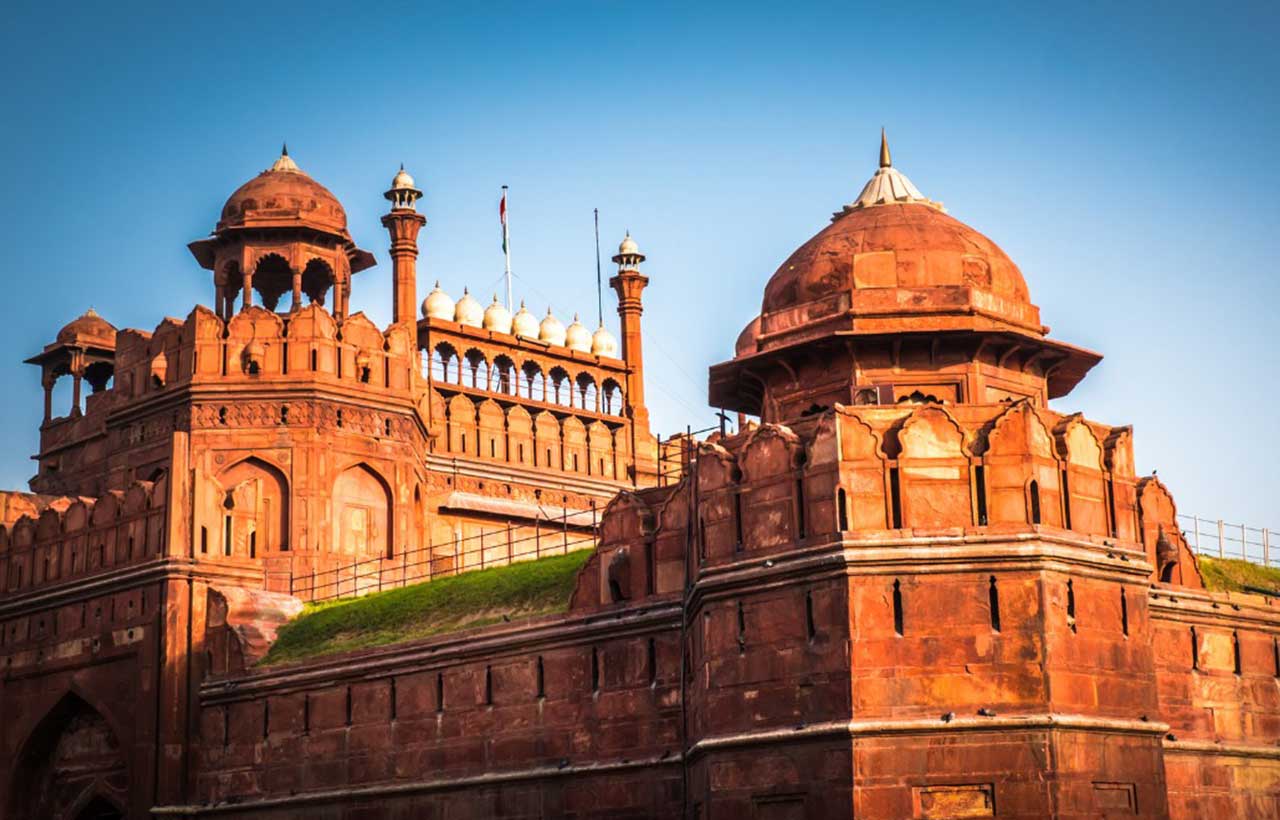
The Red Fort Delhi is a Mughal architectural masterpiece, blending Persian, Timurid, and Indian styles with striking red sandstone that gives it its iconic name. Spanning 254 acres, the Red Fort Delhi combines defensive strength with royal elegance, featuring towering walls, grand gates, and lush gardens.
Its 2.4-kilometer-long walls, rising 18 to 33 meters high, once safeguarded the Mughal capital from invasions. Inside, the Red Fort Delhi is divided into public and private areas, linked by courtyards, halls, and passages, reflecting both strategic planning and regal sophistication. Today, the Red Fort Delhi stands as a testament to India’s rich heritage.
Notable Structures Inside the Red Fort:
- Lahori Gate – The main entrance to the fort, facing the historic city of Lahore (now in Pakistan). Today, it is the site where the Indian Prime Minister hoists the national flag on Independence Day.
- Diwan-i-Aam (Hall of Public Audience) – An open hall with a flat roof and colonnaded façade where the emperor addressed the public and heard grievances.
- Diwan-i-Khas (Hall of Private Audience) – Known for its intricate marble work and the famous inscription, “If there is a paradise on Earth, it is this, it is this, it is this.” It hosted private meetings with nobles and foreign dignitaries.
- Rang Mahal (Palace of Colors) – Once the residence of the emperor’s wives and mistresses, it is decorated with vibrant interiors and features a marble water channel running through its center.
- Moti Masjid (Pearl Mosque) – A small yet stunning white marble mosque built by Emperor Aurangzeb for his private prayers.
- Hayat Bakhsh Bagh (Life-Bestowing Garden) – A sprawling garden with pavilions and water channels designed in the Persian charbagh style, symbolizing paradise on Earth.
This fusion of military strength with artistic finesse is what makes the Red Fort Delhi not just a historical monument, but a living testament to Mughal grandeur.
Read More: 30 Spiritual and Religious Places in India
Major Attractions Inside the Red Fort
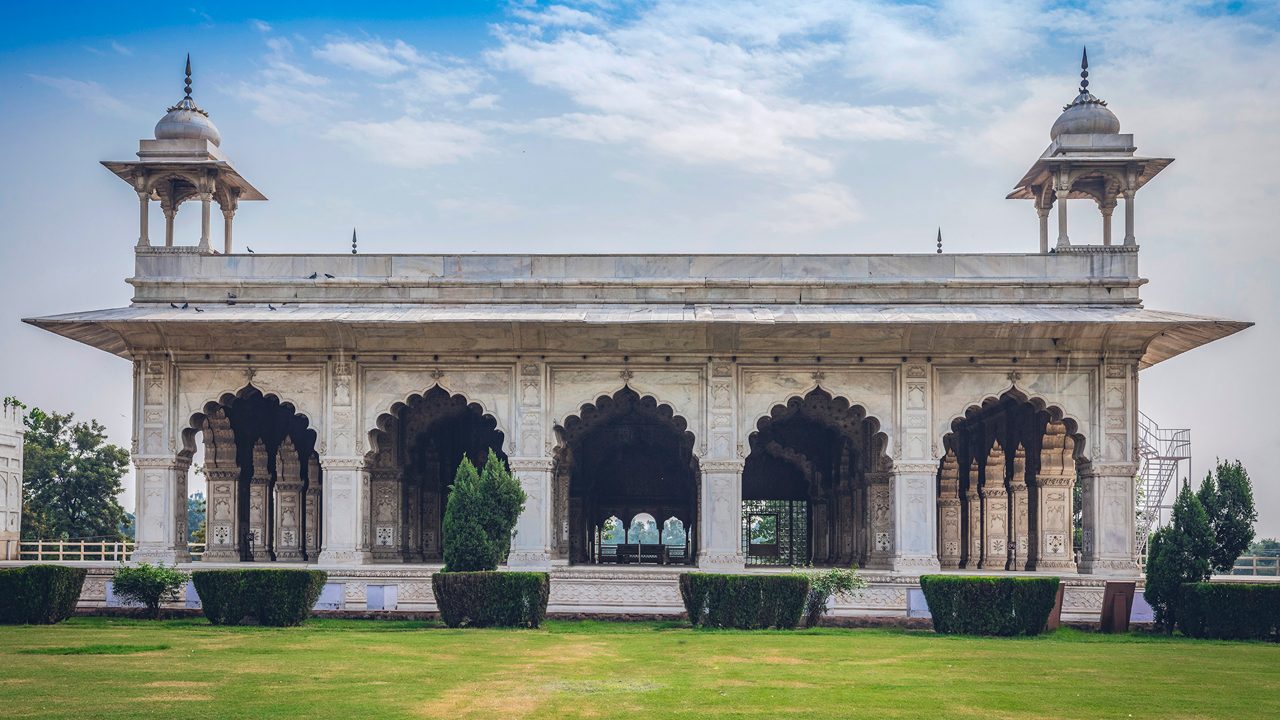
The Red Fort Delhi is more than just a historic stronghold—it’s a living museum of India’s past, offering visitors a mix of cultural, architectural, and experiential attractions. From intricately built monuments to immersive storytelling experiences, the fort’s charm lies in the way it connects history with modern tourism.
- Museums and Galleries
The complex houses several museums that showcase artifacts from the Mughal era, the colonial period, and the freedom struggle. The Indian War Memorial Museum displays weapons, uniforms, and documents from India’s military history. Another highlight is the Archaeological Museum, which preserves Mughal coins, miniature paintings, and royal belongings, offering a tangible link to the fort’s glorious past. - Sound and Light Show
Held every evening, the sound and light show is one of the fort’s most popular attractions. Through a captivating mix of narration, music, and lighting effects, it narrates the 400-year history of the Red Fort Delhi, from the reign of Shah Jahan to the events of India’s independence. This experience transforms the fort into a stage where history comes alive. - Gardens and Courtyards
True to Mughal aesthetics, the fort’s gardens and courtyards are designed in the charbagh (four-part garden) style, with water channels symbolizing the rivers of paradise. The Hayat Bakhsh Bagh, once a retreat for the royals, remains a serene escape where visitors can imagine the leisurely life of the Mughal court. - Key Monuments Within the Complex
In addition to its grand gates and audience halls, the fort contains several significant monuments:
- Khas Mahal – The emperor’s private residence with ornate marble work.
- Hammam – The royal bathhouse, featuring inlaid floral patterns and marble floors.
- Naubat Khana – The drum house where musicians played ceremonial tunes to announce the emperor’s arrival.
- Mumtaz Mahal – Now converted into a museum, it once served as royal apartments.
These attractions ensure that a visit to the Red Fort Delhi is not just about seeing a monument—it’s about walking through centuries of India’s history.
Read More: Top 10 Hidden Gems to Visit in India: Discover Offbeat Wonders
Best Time to Visit Red Fort
Planning your trip to the Red Fort Delhi at the right time can make all the difference in your experience. With its vast open courtyards, sprawling gardens, and intricate structures, weather and events play a big role in how enjoyable your visit will be.
- Seasonal Guide
- Winter (October to March) – The most pleasant time to visit, with temperatures ranging from 8°C to 20°C. The cool weather makes exploring the fort comfortable, and the soft sunlight is perfect for photography.
- Summer (April to June) – Delhi summers can be intense, with temperatures soaring above 40°C. Morning visits are recommended to avoid the midday heat.
- Monsoon (July to September) – While the rain cools down the city, sudden showers may limit outdoor exploration. However, the fort’s gardens look lush and vibrant during this season.
- Special Events
- Independence Day (15th August) – On this day, the Red Fort Delhi becomes the center of national pride. The Prime Minister hoists the tricolor and delivers a speech, just as Jawaharlal Nehru did in 1947. The ceremony is televised nationwide, and the fort is adorned with security and decorations, making it an iconic but highly crowded time to visit.
- Republic Day Week (26th January) – Although the main parade happens at Rajpath, the fort often features cultural programs, exhibitions, and heightened patriotic ambiance during this period.
If you want pleasant weather and fewer crowds, winter is the ideal season. But for those seeking a truly symbolic experience, witnessing the Independence Day ceremony at the Red Fort Delhi is unforgettable—just be prepared for large crowds and strict security.
Read More: Jhandewalan Temple, New Delhi: Timings, Rituals & Visitor Guide
Entry Fee and Timings
Visiting the Red Fort Delhi is not just a trip to a historical monument—it’s an experience of stepping back into centuries of history. Here’s everything you need to know about ticket prices and visiting hours to plan your trip efficiently.
- Ticket Prices
- Indian Citizens: ₹35 per person
- Foreign Tourists: ₹500 per person
- Children (below 15 years): Free entry
- Students: Concessions are often available on showing a valid student ID card, especially for educational trips organized through schools or colleges.
Note: The prices are as per the Archaeological Survey of India’s (ASI) latest guidelines and may change during special events or due to policy updates.
- Opening and Closing Times
- Open Days: Tuesday to Sunday
- Closed On: Mondays and national holidays with official events
- Opening Hours: 9:30 AM to 4:30 PM for general visitors
- Evening Shows: The Sound and Light Show has separate evening timings, generally after sunset, and requires a separate ticket.
- Extra Tips
- It’s best to book tickets online in advance to skip long queues, especially during peak tourist seasons and around Independence Day.
- Arrive early in the day to explore comfortably and have enough time to see all the main attractions inside the fort.
With its affordable ticket prices and convenient visiting hours, the Red Fort Delhi welcomes millions of tourists each year to experience its grandeur and historical legacy.
How to Reach the Red Fort
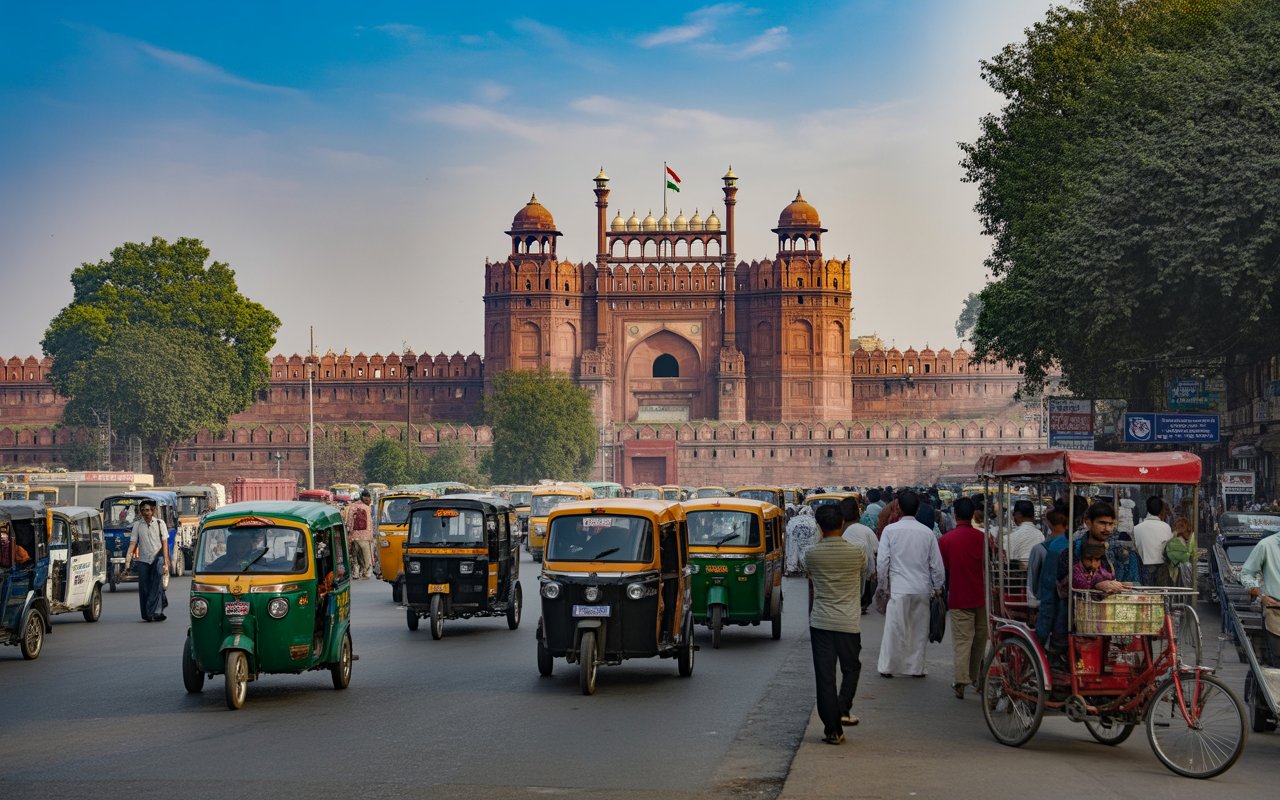
Reaching the Red Fort Delhi is quite convenient thanks to its central location and excellent connectivity through public and private transport.
- By Metro
- The nearest metro station is Lal Qila (Violet Line), just a short 5–10 minute walk from the fort’s main entrance.
- Alternatively, Chandni Chowk Metro Station (Yellow Line) is also nearby, followed by a rickshaw ride or a 15-minute walk.
- By Bus
- Several DTC (Delhi Transport Corporation) buses and private buses stop at Red Fort / Lal Qila bus stop, connecting major parts of Delhi.
- Routes from ISBT Kashmiri Gate, Connaught Place, and Old Delhi Railway Station are frequent and affordable.
- By Car or Taxi
- Paid parking facilities are available near the fort, including at Jama Masjid and Meena Bazaar areas.
- However, traffic can be heavy, especially on weekends and public holidays, so plan accordingly.
- Accessibility for Differently-Abled Visitors
- The fort has wheelchair access at the main entrance and ramps at several key locations inside.
- Some older structures may have limited accessibility due to their historic design, but museum areas and main courtyards are generally accessible.
Whether you’re coming by metro, bus, or private transport, the Red Fort Delhi is well-connected, making it easy for both locals and tourists to visit and explore this historic icon.
Travel Tips for Visiting Red Fort
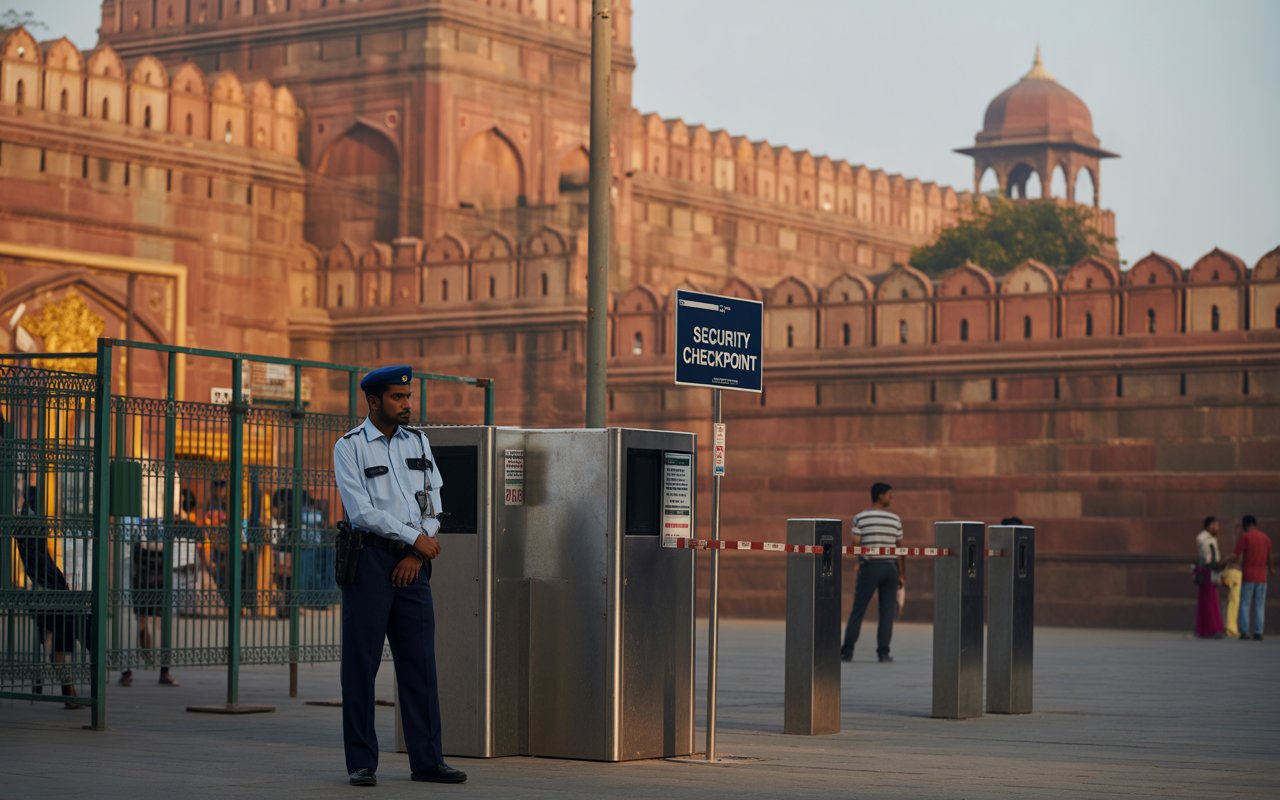
Visiting the Red Fort Delhi can be a truly enriching experience if you plan it well. Here are some practical tips to make the most of your trip:
- Best Time of Day to Visit
- Arrive early in the morning (around 9:30 AM) to avoid large crowds and enjoy cooler weather, especially in summer.
- Evenings are pleasant in winter, and you can combine your visit with the sound and light show for a magical experience.
- Security Checks and Entry Restrictions
- Be prepared for airport-style security screening at the entrance.
- Large bags, food items, and certain sharp objects are not allowed inside.
- Drinking water bottles are permitted, but glass bottles and alcohol are prohibited.
- Photography Tips
- Photography is allowed in most parts of the fort, but tripods and drones are not permitted without prior approval.
- The Lahori Gate and Diwan-i-Khas offer some of the most iconic photo opportunities, especially in soft morning light.
- Suggested Duration of Visit
- Allocate at least 2–3 hours to explore the main structures, museums, and gardens at a relaxed pace.
- If you plan to watch the evening light and sound show, add an extra 1 hour to your itinerary.
With these tips, you can enjoy the Red Fort Delhi without feeling rushed, while capturing beautiful memories of one of India’s most treasured landmarks.
Red Fort in Indian Freedom Struggle
The Red Fort Delhi holds a unique place in India’s journey to independence, becoming more than just a Mughal architectural marvel — it emerged as a powerful symbol of freedom.
- How it Became a Symbol of Independence
During the Revolt of 1857, the fort became a focal point for resistance against British colonial rule. After the uprising, it was taken over by the British, who used it as a military base — a reminder of India’s subjugation.Over time, freedom fighters began to see the Red Fort as a symbol of the nation’s lost sovereignty, making its reclamation synonymous with liberation. - Nehru’s Speech and Flag Hoisting Tradition
On 15th August 1947, India’s first Prime Minister, Jawaharlal Nehru, stood atop the Lahori Gate and delivered his historic “Tryst with Destiny” speech to mark the country’s independence. He then unfurled the Indian tricolour, turning the Red Fort into the ceremonial heart of the nation. - Annual Independence Day Celebrations
Since 1947, every Independence Day, the Prime Minister hoists the national flag at the Red Fort, addressing the nation and the world. This tradition continues to reinforce the fort’s identity as the “Icon of Freedom,” drawing thousands of visitors and millions of viewers each year.
Read More: Top 10 Historical Places in Delhi For Heritage Tour
The Red Fort Delhi is not just a heritage monument — it’s a living testament to India’s resilience, sacrifice, and unbroken spirit of freedom.
Nearby Attractions to Explore
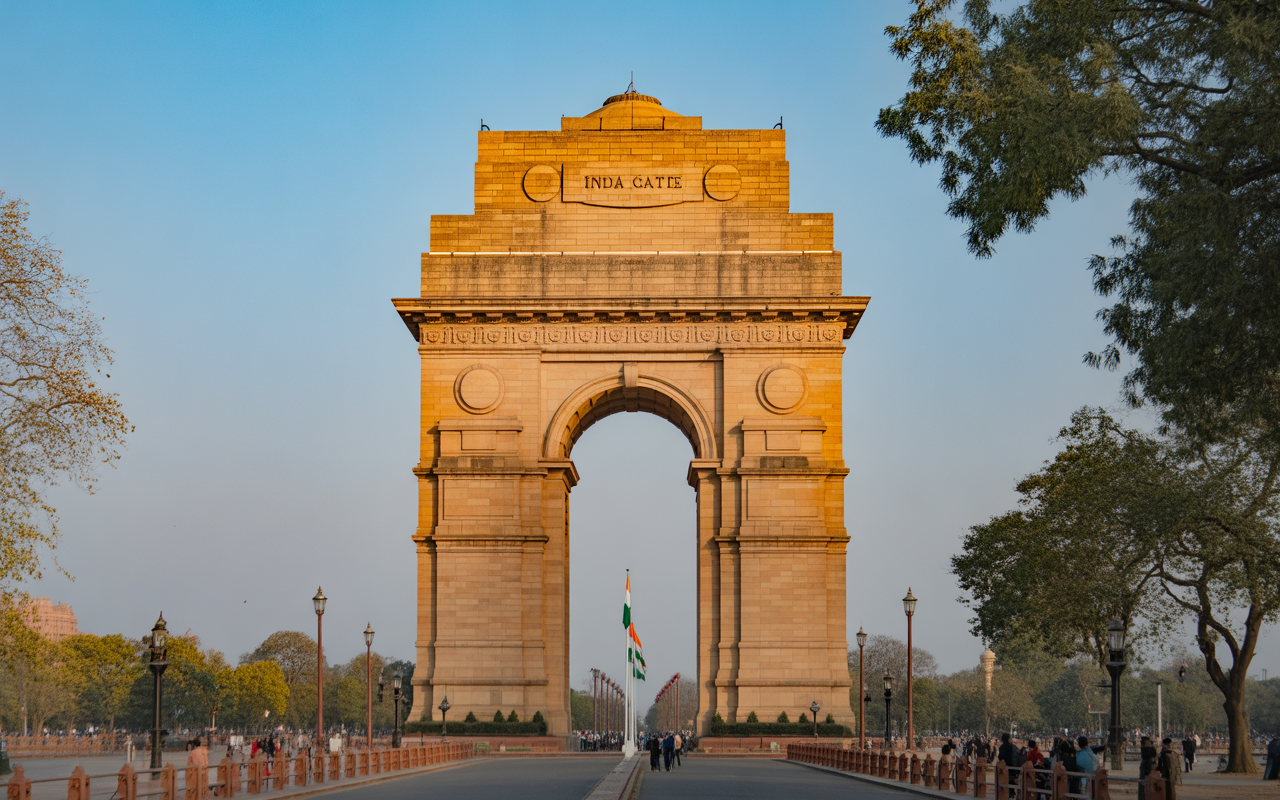
A visit to the Red Fort can be combined with several nearby landmarks that offer a deeper glimpse into Delhi’s history and culture:
- Jama Masjid – One of the largest mosques in India, built by Shah Jahan, just a short walk from the Red Fort.
- Chandni Chowk – A bustling historic market famous for street food, spices, jewellery, and textiles.
- Raj Ghat – The serene memorial dedicated to Mahatma Gandhi, located on the banks of the Yamuna River.
- India Gate – A grand war memorial honouring soldiers who died in World War I, perfect for an evening stroll.
These attractions make your Red Fort trip more enriching, letting you experience Delhi’s heritage, flavours, and spirit in one go.
Read More: Top 10 Places in Delhi – The Ultimate Travel Guide
Conclusion
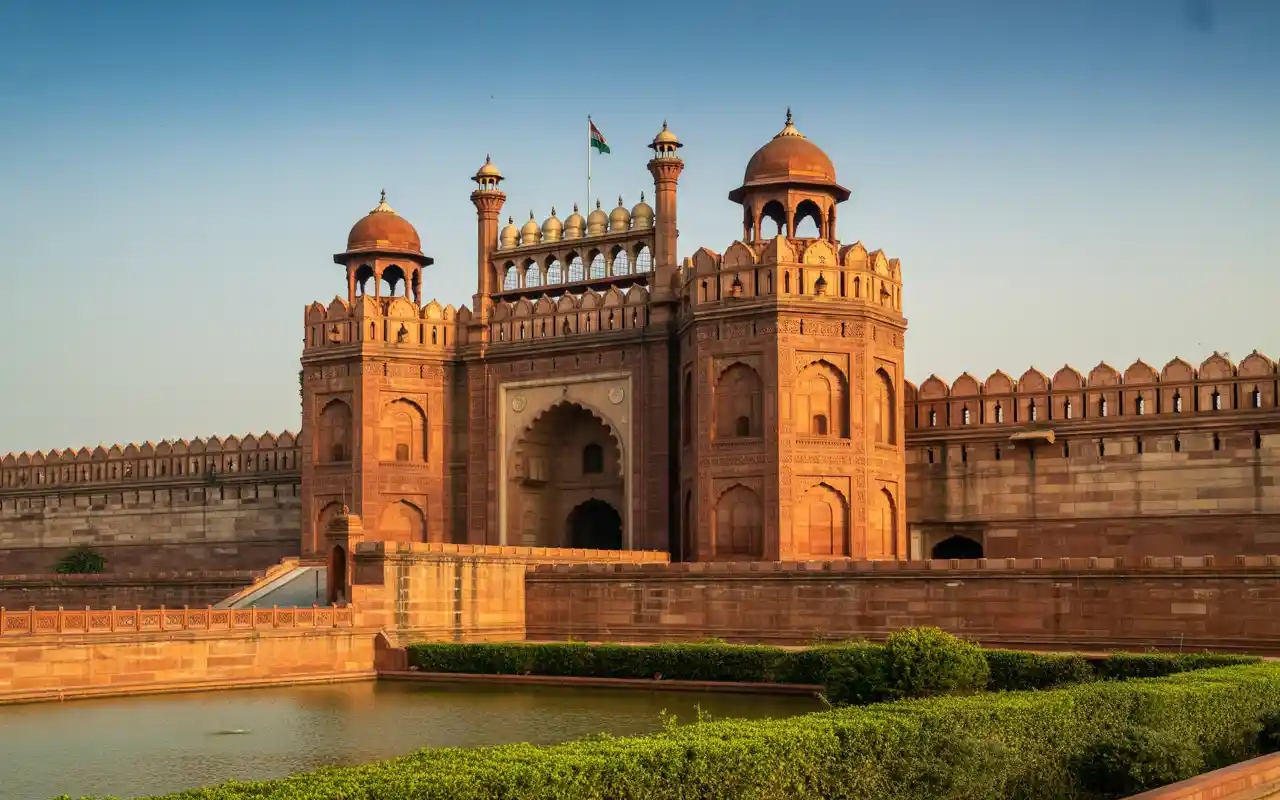
A visit to the Red Fort Delhi is more than just a sightseeing experience — it’s a journey through India’s rich history, architectural grandeur, and deep-rooted patriotism. From walking through its majestic gates to exploring its royal halls, gardens, and museums, you can almost feel the echoes of the Mughal era and the spirit of the freedom struggle.
Standing at the Red Fort Delhi, where Jawaharlal Nehru delivered his iconic “Tryst with Destiny” speech in 1947, you witness the enduring symbol of India’s independence.
Whether you’re a history buff, culture enthusiast, or casual traveler, the Red Fort Delhi offers a perfect blend of heritage, storytelling, and national pride — making it a must-visit landmark for everyone who wants to truly experience the soul of India.
Read More: Top 10 Iconic Freedom Landmarks of India You Must Visit
